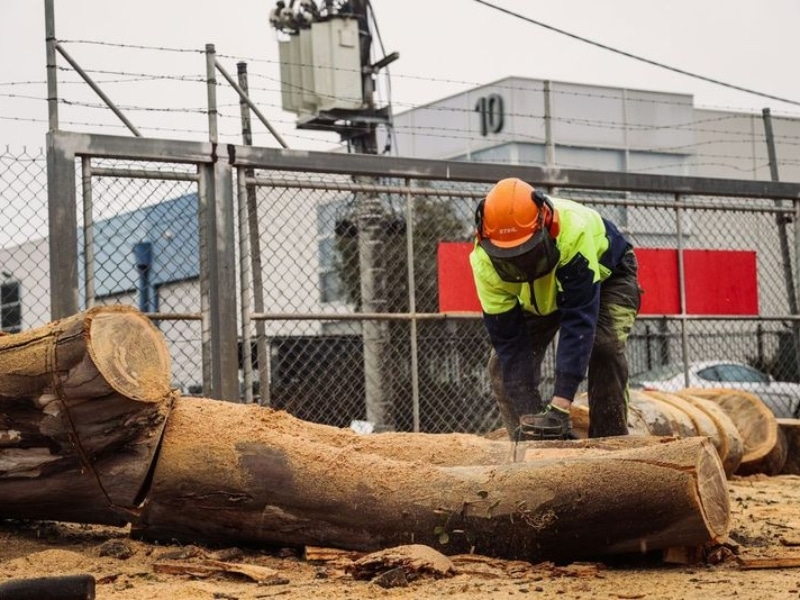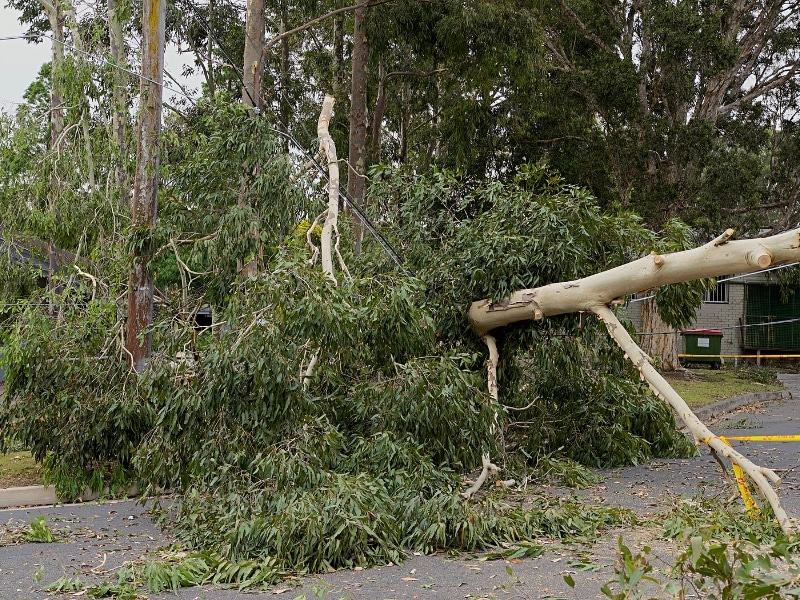Trying to remove a fallen tree may seem manageable, but it can quickly become dangerous. Whether you’ve had a large tree topple in your yard or your property has been affected by storm damage, handling the situation yourself might be tempting. However, attempting to remove a fallen tree alone presents risks that can be easily avoided with the proper knowledge and help.This article will explore why taking on this task alone can be more hazardous than you think.
Why is removing a fallen tree alone so dangerous?
When you try to remove a fallen tree by yourself, the risks are heightened due to a combination of factors such as the tree’s size, inexperience, and the unpredictability of the situation. Below are some key dangers of removing a fallen tree alone:
- Lack of experience: Handling a chainsaw and manoeuvring a large tree requires skill and knowledge. Without proper understanding, it’s easy to make errors that could lead to serious injury.
- Unpredictable tree movement: Trees can shift unexpectedly when cut or moved, which can result in the tree causing harm to you or damaging your property.
- Heavy lifting: Huge fallen trees can weigh hundreds or even thousands of kilograms. Attempting to move such a heavy object without the proper equipment or assistance can lead to muscle strains.
- Environmental factors: Factors like weather conditions (wind or rain) can make the task even riskier, as they can cause the tree to shift or fall unpredictably.
Overall, trying to handle fallen tree removal alone without the necessary equipment, knowledge, and assistance can quickly turn into a life-threatening situation.
When should you avoid removing a tree alone?
There are specific situations where removing a tree alone should be avoided. Here’s when you should call for professional help:
| Situation | Risk/Concern | Recommendation |
| Tree too large | Too heavy to move | Hire professional arborists |
| Tree near power lines | Risk of electrocution | Avoid attempting removal |
| The tree is in a dangerous location | Risk of further damage | Call a professional for removal |
| A tree tangled in objects | Difficult disentangling | Professional assistance needed |
| Lack of proper equipment | Safety hazard | Use proper tools or hire help |
Recognising these signs early and calling for help can save you from unnecessary risks and damage.
What injuries can happen if you remove a tree alone?
Attempting to remove a tree by yourself can lead to various serious injuries. Some of the most common injuries include:
- Chainsaw injuries: Improper use can cause cuts, lacerations, or amputations. Lack of protective gear increases the risk.
- Back and neck injuries: Lifting or moving a heavy tree without proper form or assistance can cause strains or spinal injuries.
- Crush injuries: Unexpected tree shifts or falls can cause crushing injuries, broken bones, or internal injuries.
- Falling from height: If you’re using ladders or climbing a tree to cut it down, falling from height is a major concern and one of the common causes of serious injuries during tree work. Even a fall from a small height can lead to significant injuries.
- Electrical Shock: If the tree is in contact with power lines, trying to move it or cut it can cause electrocution, which can be fatal.
As you can see, the potential for injury is significant, and it’s often better to call professionals to handle the task safely.
Which signs show that a tree might fall?
Sometimes, a tree that hasn’t fallen yet can pose a significant risk, especially near your home or other structures. Recognising the signs early can help prevent the situation from escalating:
| Signs of Risk | Description | Potential Risk |
| Leaning or tilted trees | Root system compromised, more likely to fall | Increased likelihood of fall |
| Cracked or split trunks | Visible cracks or splits in trunk/branches | Weakened structure, increased fall risk |
| Roots exposed or damaged | Higher risk of falling, especially during storms | Dangerous in stormy conditions |
| Dry or dying trees | More prone to falling during storms or winds | Fall risk increases with storms |
| Shallow roots | Likely to fall after rainfall or strong winds | Instability due to shallow roots |
If you notice these signs, it’s important to act quickly, either by securing the tree or getting professional help to remove it, so you don’t face the serious risks of ignoring a hazardous tree on your property.
How can you safely handle a tree emergency before help arrives?
If you find yourself facing a fallen tree or a tree that’s a danger to your property, there are steps you can take to manage the situation safely until professional help arrives:
- Assess the situation: Determine if the tree is blocking access to your home, cars, or essential areas. Check for immediate hazards like downed power lines.
- Stay clear of the tree: Avoid moving or cutting a tree near power lines or hazards. Stay at a safe distance.
- Call professionals: Contact a tree removal service like The Yard for expert assistance.
- Mark the area: If safe, mark the perimeter to prevent accidental entry.
- Stay calm: Experts are trained to handle emergencies efficiently.
These simple precautions can help ensure your safety while waiting for professional assistance. If you are in a situation with a fallen tree, consider emergency tree removal solutions to manage the situation safely.
Which other risks should you consider when removing a fallen tree alone?
Aside from physical injuries, there are other risks you should consider before attempting to remove a fallen tree on your own.
- Property damage: A fallen tree can damage your home, fence, or property if removed improperly. Attempting it yourself may cause more harm.
- Legal issues: Removing a tree without a permit can result in fines. Professionals like The Yard ensure compliance with local regulations.
- Environmental concerns: Improper disposal of tree debris harms the environment. Professionals help dispose of waste responsibly.
- Insurance complications: DIY removal may void coverage if damage occurs; professionals ensure insurance protection.
Before attempting to remove a fallen tree or tackle tree removal alone, it’s essential to understand all these risks and evaluate whether you’re prepared to manage them.
How can you prevent fallen trees on your property?
Preventing fallen trees on your property can save you significant time, money, and stress. Whether through regular maintenance or services like Tree Removal Sandringham, here are some steps you can take to reduce the likelihood of a tree falling:
- Regular tree inspections: Hire a qualified arborist to inspect trees annually for weaknesses, disease, or instability.
- Prune regularly: Keep trees well-pruned to maintain strength and reduce storm damage risk.
- Root care: Water and fertilise roots to keep trees healthy and stable.
- Remove dead or weakened trees: Remove dying or damaged trees before they fall.
- Consider tree placement: Plant trees away from structures or power lines for safety.
Taking proactive steps to care for your trees can help avoid the risks and costs associated with a fallen tree.
Conclusion
In conclusion, attempting to remove a fallen tree alone is dangerous. It can lead to serious injury, property damage, or legal complications. It’s crucial to assess the situation carefully and seek professional help if unsure. Professional tree removal services like
If you need expert help with tree removal, stump grinding, or arborist reports, speak to the team at The Yard to discuss your tree care needs.



